Traditional architecture has evolved over generations in response to the local climate, topography, culture and context. It employs locally available natural materials and indigenous construction techniques. Hence, it is sustainable, cost-effective and has a strong aesthetic character.
To put it in the words of the Gandhi of Indian architecture, Laurie Baker — “Sometimes the local architecture is so beautiful and so apt that I feel it would be foolish and an affront to try and design in any other way.”
But did you know that many of the elements of traditional architecture can be easily reinterpreted and incorporated in the design of new homes?
Local and natural materials
Traditional architecture employs locally sourced natural materials as they are easily available, economical and climatically more suitable. Also, they have a very low carbon footprint due to negligible transportation cost. Such materials also harmonise well with the natural environment of the location.
Stone, bricks, mud, wood, lime and thatch were the most widely used materials depending upon their availability in a particular region.
Since time immemorial, homes have used stone for building walls, roofs and floors. Stone is strong and durable, in addition to being available in a wide range of appealing colours, grains and textures. It is advisable to use stone that is found locally like slate in Himachal, sandstone in Rajasthan, cuddapah in Andhra or laterite in Kerala.
Mud and bricks have been used in buildings since ancient times. Mud is the one of the most eco-friendly materials available for building. Sun-dried bricks also fall in the same category. Burnt bricks have added strength and impermeability that made them popular since the times of the Indus valley civilisation. Brick buildings and structures have stood for centuries bearing testimony to their durability.
While bricks are being widely used for construction even today, building with mud has become obsolete. Some architects and organisations are trying to revive the use of mud in contemporary architecture. Architect Didi Contractor uses sun-dried mud bricks in the adobe construction of homes in the Dharamshala. She works on the philosophy of “marrying the Earth to the building”.
Lime was used in the buildings before the advent of cement. Lime mortar and plaster can save on the consumption of cement without loss of any strength. Lime wash is also a healthy and an organic option for painting instead of using synthetic paints that release harmful VOCs (volatile organic compounds).
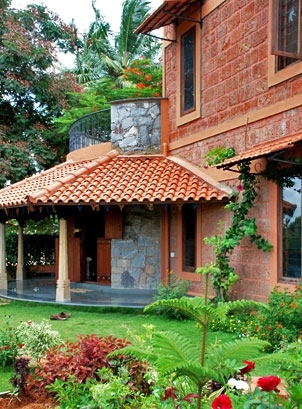
In the North-eastern states of India bamboo has been used for making traditional homes. In the flood prone areas, the houses were raised on stilts. Bamboo being light weight is suitable for this region that has frequent earthquakes. Bamboo has a lot of potential as it is a grass that grows very quickly and possesses amazing strength and flexibility.
In the past, wood was used mainly for doors and windows and in some regions for the building the structure. But, in today’s homes we need to refrain from using wood excessively as it contributes to deforestation. So, wherever possible reuse or procure FSC (Forest stewardship Council) certified wood to ensure that it is from a responsibly harvested forest.
Courtyard
Internal courtyard was an integral part of a traditional Indian home layout. It provided ample natural light and ventilation to the home interiors. Known as the aangan in Hindi, vehra in Punjabi or nadumuttom in Malayalam, it was a space where a lot of the family activities could take place in complete privacy.
In many homes the courtyard was flanked by corridors and verandahs from which the various rooms could be accessed. These provided shade and kept out the rain. Some homes had more than one courtyard. The courtyard played an important role in maintaining thermal comfort and natural ventilation in the interiors. It functioned as a convective thermostat protecting the home from extremes of temperature. Dust storms would pass over the residence with little impact. It also helped to create a pleasant environment by bringing nature into the home.
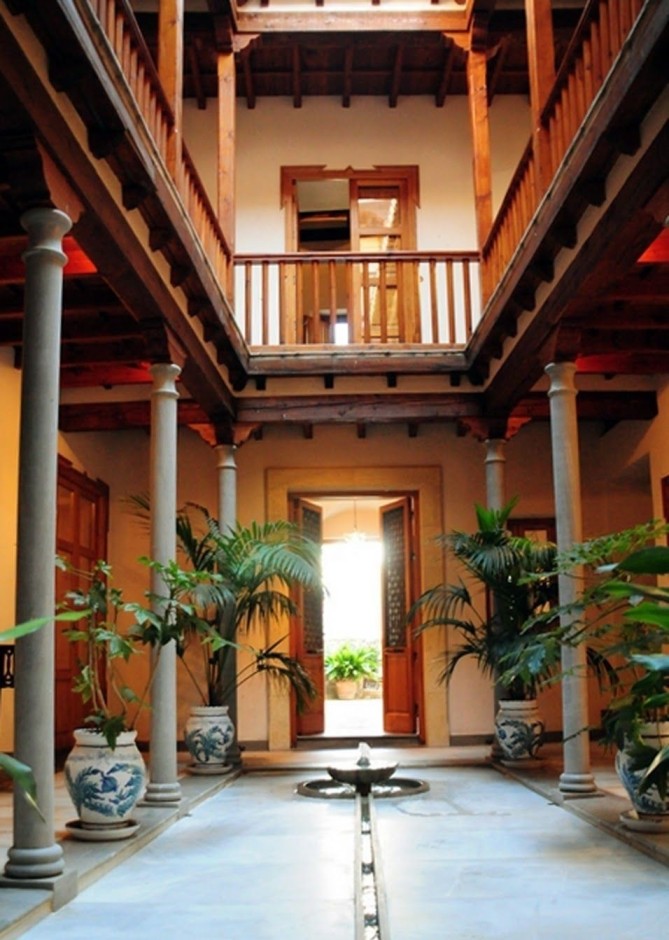
Jaalies
In the hot climate of India jaalies or lattice screens have been widely used in traditional architecture for ventilation, diffused light, shade and privacy. These screens let in the cool breeze but keep out the harsh sun and the dust. They form interesting patterns with light and shadows. The Hawa Mahal in Jaipur, was built for the women of the royal family to see the activities of the street below, especially ceremonial processions in complete privacy and comfort. The entire facade is made of intricate lattice work in sandstone. Mughal architecture also made use of beautiful jaalies in marble and sandstone for palaces and pavilions. Using jaalies along with water features was extremely effective in reducing the summer heat. Modern interpretations of jaalies have been employed by some architects in their designs. Le Corbusier used brise-soleil or sun-breakers for his buildings in Chandigarh. Laurie Baker creatively experimented with various forms of brick jaalies in many of his projects.
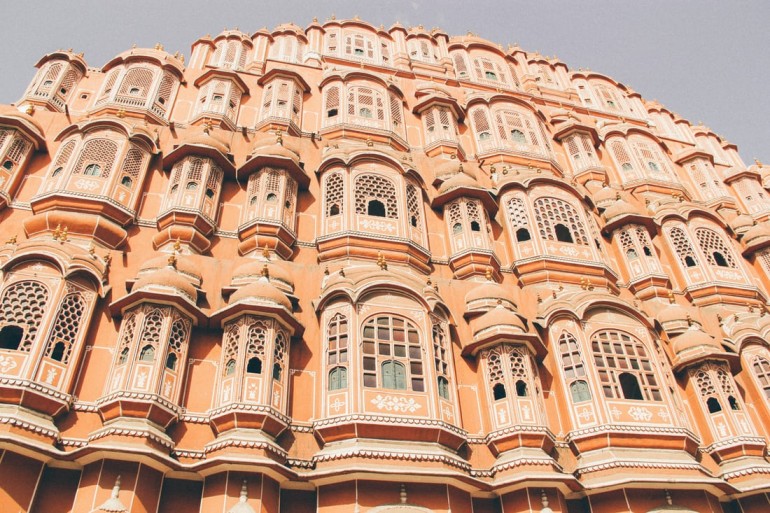
Photo: Mitchell Ng
Verandah
It is a covered and partially enclosed structure attached to a house. Traditional homes usually had a verandah at the entrance to receive guests. These provide shade and keep out the hot sun and rain. The verandah forms the transitional space between the home interiors and the external environment, thereby connecting inhabitants of the house with nature. In a traditional Kerala home, in addition to the front verandah, poomukham, there are verandahs on the sides also called chuttu verandahs. These protect the house from the summer heat and heavy monsoon rains. Verandahs next to the courtyards provided cool and shaded space for various family activities and social interaction. The roof of the verandahs was supported by a series of columns that were beautifully carved in wood or stone.
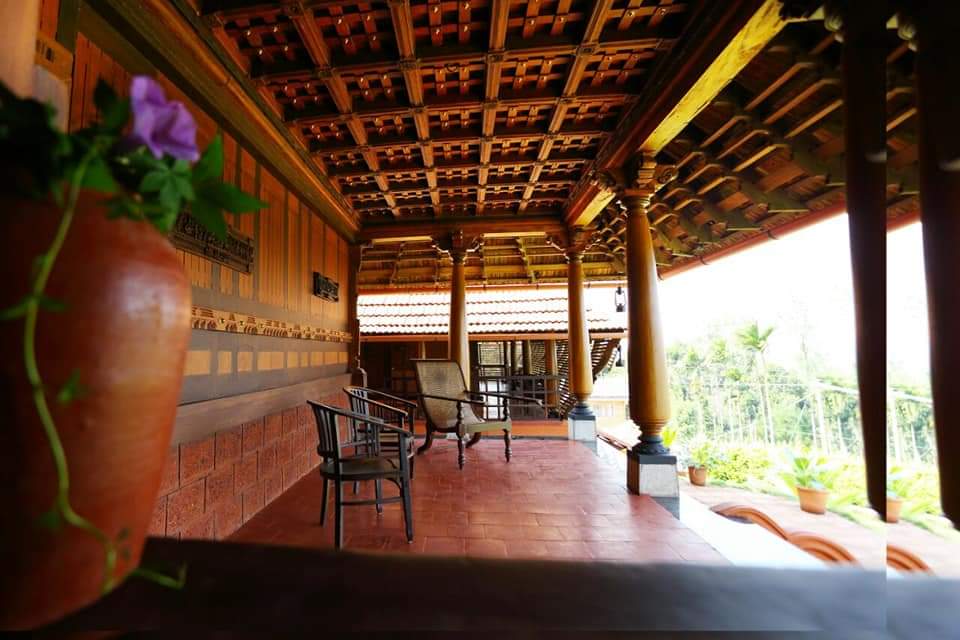
Photo: Praji K Nair
Chhajjas
Chhajjas are projections over window and door openings to protect them from sun and the rain. These may be sloping or horizontal or can form a protection all around the opening like a jharokha in Rajasthani architecture. Due to the shade provided by the chhajjas on the openings, they contribute to the reduction of heat entering the interiors of the home. In the tropical climate, sloping overhangs have been traditionally employed to keep out the heavy monsoon rain. Similarly, sloping chhajjas are used in areas that receive heavy snowfall.
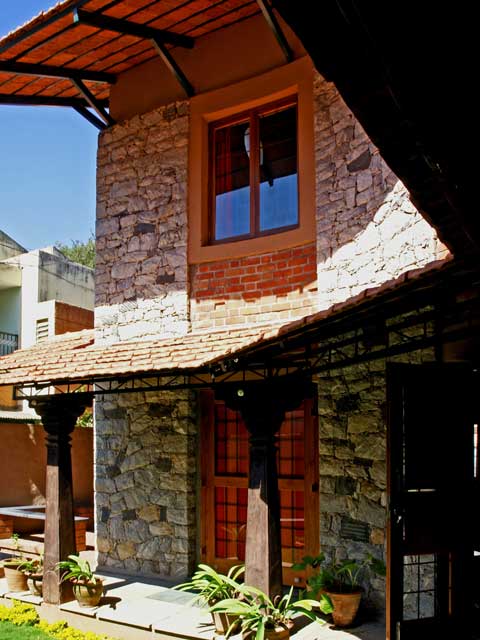
Photo: vernarch.com
Sometimes separate chhajjas are not required and the eaves of the sloping roofs provide protection to the openings below it. Chhajjas are an architectural element that add a lot of interest to the exteriors with their projections and the shadows they cast. Jaisalmer is known for its exquisite architecture in yellow sandstone with jharokhas and jaalies as the main architectural elements.
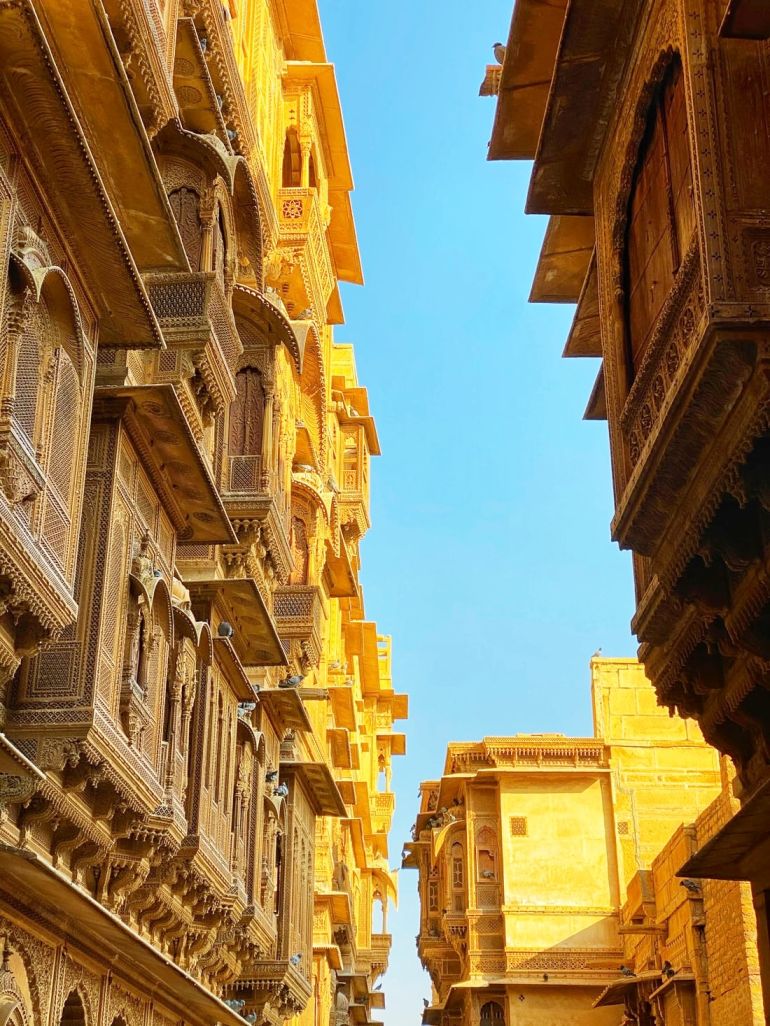
Photo: Rishab Nishar
Arches
Arches are beautiful design features that are rarely used in today’s homes. Arches lend a lovely charm due to their soft curves that provide a welcome change from the straight lines and right angles. Arches also offer the advantage of being structurally stable due to their form. This means that arches can be constructed without the lintel that is used over all door and window openings. They can be made in bricks or stone thereby saving on the amount of concrete used in the lintels. Arches look really appealing in corridors and verandahs.
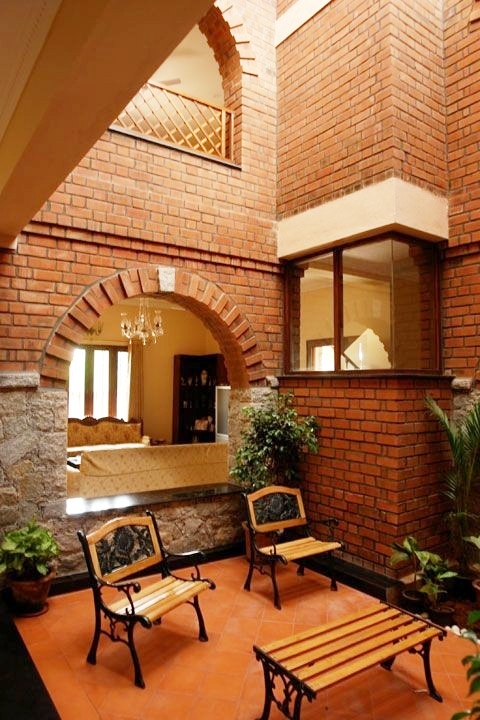
Photo: vernarch.com
Sloping roofs
Sloping roofs have always been employed in areas receiving heavy rainfall and snowfall. But today, the ubiquitous flat concrete slabs are quickly replacing these sloping roofs in our cities and villages. In the Southern states, sloping roofs were built to drain the heavy monsoon rain. They were usually covered with terracotta tiles, the elegant Mangalore tiles being the most famous. In the mountains of Northern India, sloping roofs were made of stone tiles like slate. These natural tiles and the sloping roofs added to the aesthetic appeal of the home. The sloping roof had an elaborate supporting structure with trusses, rafters and purlins. At times, interesting skylights or dormer windows were also introduced to get some light into the interiors.
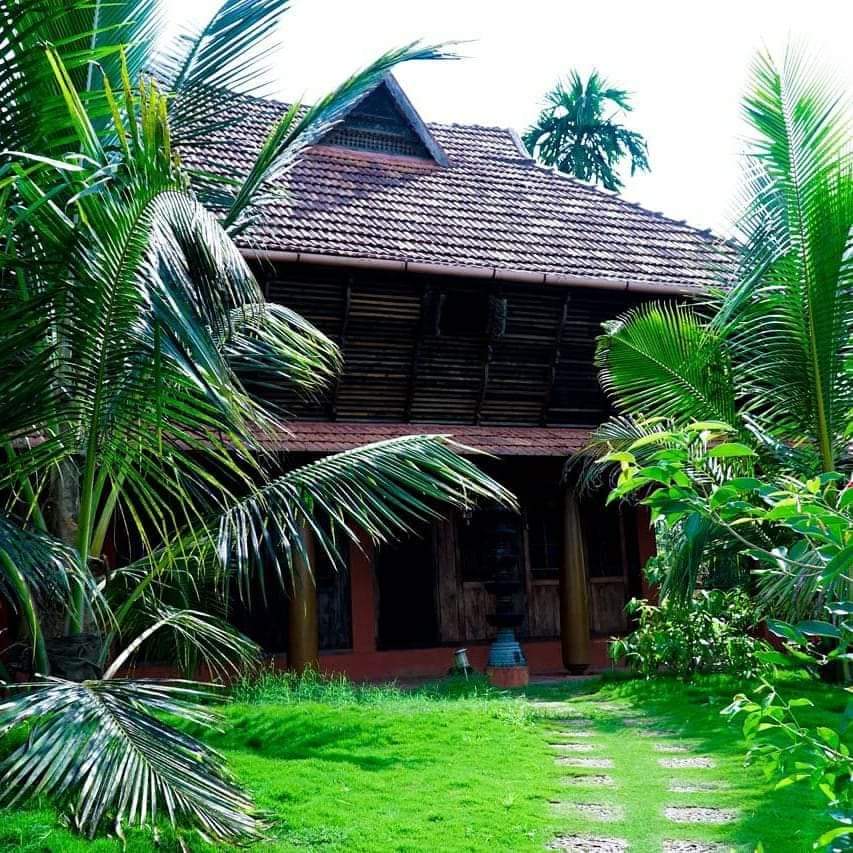
Photo: Praji K Nair
Built-in furniture
In traditional Indian architecture some of the furniture used to be built while constructing the house. In Kerala homes, there used to be built-in seating in the front verandah known as charupaddi. It was used by the family members for entertaining guests. There were a few wooden swings in the verandah of South Indian homes as well.
Inside most homes there used to be niches, alcoves and shelves for storage and display. Some alcoves were used to keep the diyas or lanterns at night as they would not get blown out by the wind. The built-in furniture was extremely durable and also saved on the woodwork. While designing modern homes some such interesting furniture can be planned. Displays in niches with concealed lighting, in this writer’s opinion, look spectacular.
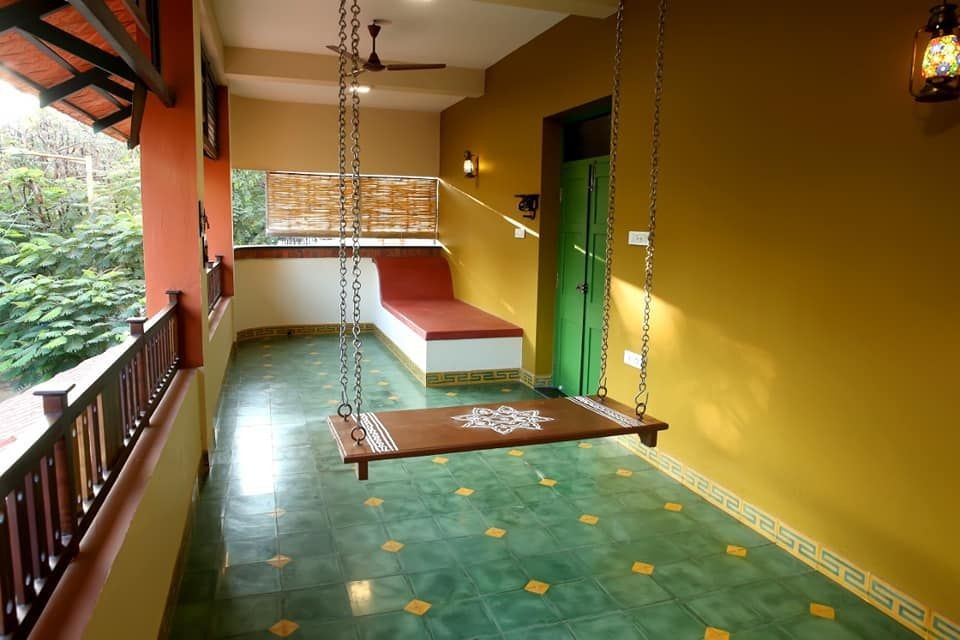
Photo: vernarch.com
The author of this article, Navita Singh, is an architect and interior designer.
(Edited by Yoshita Rao)
No comments:
Post a Comment